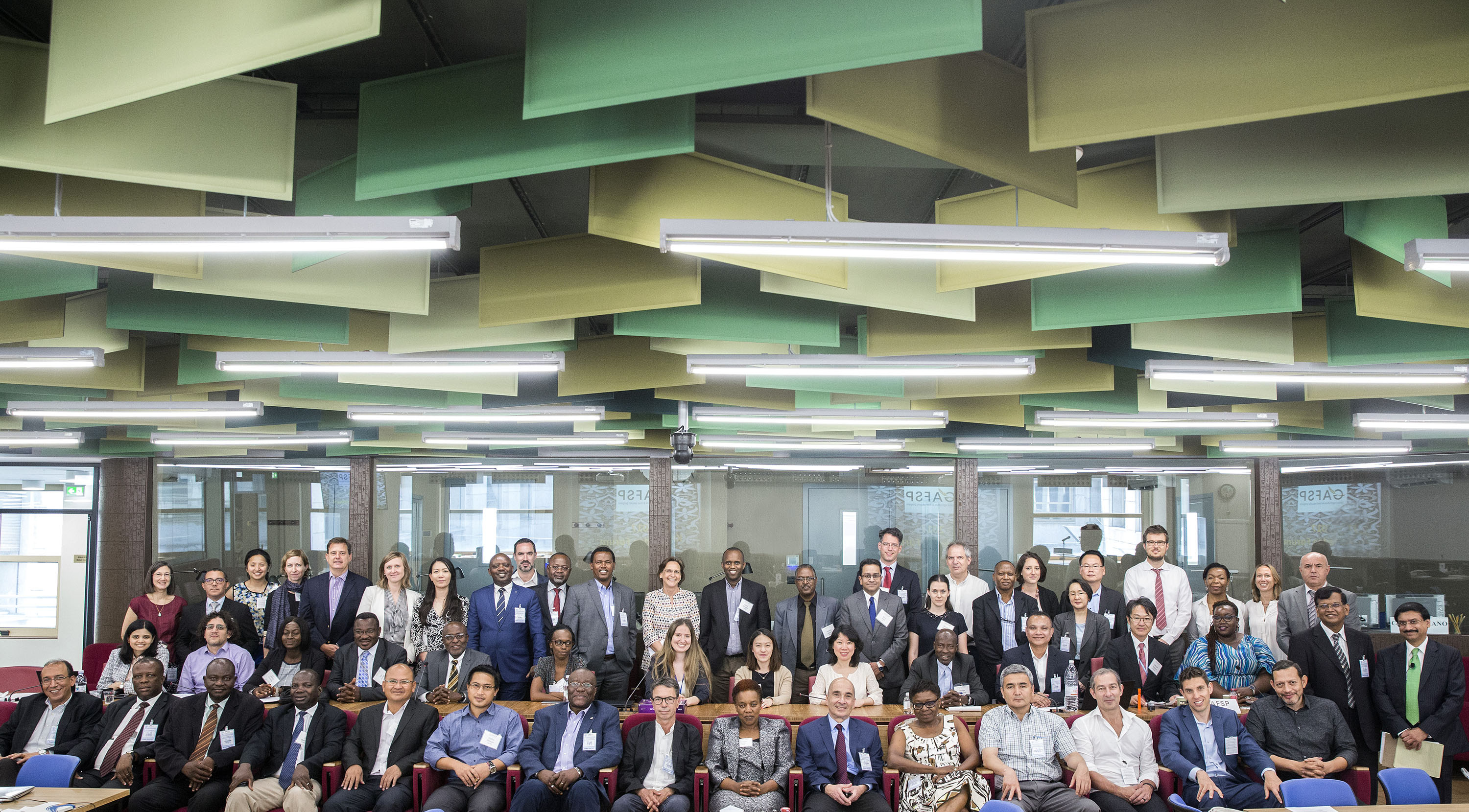FAO hosts third GAFSP Knowledge Forum

From 30 May to 1 June, FAO hosted the Global Agriculture and Food Security Program (GAFSP) Knowledge Forum at its headquarters in Rome. FAO’s Deputy Director General, Programmes Dan Gustafson welcomed over 60 participants involved in the design and implementation of around 50 GAFSP-funded projects, including a number of FAO country level staff. FAO is one of seven GAFSP supervising entities.
Established as a response to the 2008/09 global food price crisis, the GAFSP promotes long-term sustainable investment to build resilience and improve agricultural performance in low-income countries.
Now in its third year, the Knowledge Forum brings together experiences from a broad portfolio of GAFSP projects from both the public and private sector windows.
Public sector interventions help farmer organizations boost their productivity and participation in value chains, while private sector projects provide financing support to small and medium-sized agribusiness. The Forum also looks at mutually reinforcing linkages between the two, such as connecting farmer organizations to wholesale distributors.
Participants in this year’s event shared innovative ideas, best practices and practical experiences on a range of topics, from improving delivery and ensuring greater impact for the rural poor, to capturing results that demonstrate the added value of GAFSP projects, drawing lessons, in particular, from projects nearing completion.
“The Forum was a true team effort by different institutions united around common priorities,” said Augusto Garcia, World Bank Task Team Leader for the Caribbean Food Security Project based in Nicaragua. “It showed how to truly advance innovation in a context of climate change and fragility, supporting private public collaboration, food systems and youth employment in different country contexts.”
Monitoring impact
A core area of discussion was the implementation of the GAFSP Monitoring and Evaluation Plan, which is crucial for assessing impact in terms of improved food security and nutrition. The plan incorporates FAO’s Food Insecurity Experience Scale – developed as part of the Voices of the Hungry Initiative – which enables projects to demonstrate concrete achievements towards the UN Sustainable Development Goal 2 (SDG 2) to ‘End Hunger’.
Partner institutions such as the African Development Bank (AfDB), Asian Development Bank (ADB), International Finance Corporation (IFC), Inter-American Development Bank, IFAD, WFP and the World Bank provided energetic “Pecha Kucha” style-talks – designed to be short and to the point - to share the essence of project outcomes in countries like Rwanda (World Bank), Sierra Leone (IFAD), Zambia (AfDB), Cambodia (ADB), Mongolia (FAO and World Bank), the Africa region (IFC with FAO and WFP), Bhutan (IFC), Solomon Islands (IFC) and Nicaragua (World Bank).
Other Forum highlights included a marketplace of potential technical partner organizations for team leaders to meet, including the Agricultural Research for Development, the World Bank’s Development Impact Evaluation, the European Space Agency, the Global Forum on Agricultural Research, the International Center for Agricultural Research in the Dry Areas, SCOPE Insight and the 10-year Framework of Programmes on Sustainable Consumption and Production Patterns.
Iftikhar Mostafa, of the GAFSP Coordination Unit in Washington, D.C., said that “people, innovation, knowledge sharing, Pecha Kucha talks and the marketplace for technical partners” made this year’s Forum so informative and exciting.
Transforming ideas into action
A key function of the Forum is to transform ideas into action. This was illustrated by a discussion on the Missing Middle Initiative (MMI), which was first conceived during a previous Forum. The MMI is a USD 13.2 million grant window testing innovative ways to reach farmers directly, helping to bridge the financing gap between smallholder producers and markets. Five projects have been funded under this programme and will soon be operational.
GAFSP program manager Nicola Dyer, speaking via a video link, encouraged participants to share experiences and seek opportunities to collaborate as projects evolve, taking advantage of the diversity of participants from the public and private sector financing windows, and from civil society. She also encouraged team leaders to embrace their ambassadorial role for the GASFP in their respective countries by measuring and communicating results and impact.
“The discussions were open and frank, and the event helped create a useful network of practitioners across the organizations,” said Alberta Mascaretti, Chief of the FAO Investment Centre’s sub-Saharan Africa Service. “The GAFSP Coordination Unit also provided very useful information on the GAFSP process and evolution, which helped immensely in bringing everyone up to date.”
FAO and GAFSP collaboration
Having recently returned from the March GAFSP Steering Committee meeting in Washington D.C., Mascaretti added: “GAFSP and FAO will continue to work together to improve the capacities of national institutions, including farmer organizations, to eliminate hunger and malnutrition, and to support inclusive and equitable economic growth.”
To date, GAFSP has channelled almost USD 15 million to recipient countries through FAO, as one of the supervising entities. Over USD 10 million was awarded for public sector window-supported projects in Bangladesh, Ethiopia, Gambia, Kenya, Mongolia and Timor-Leste. GAFSP has granted FAO USD 5 million for two MMI projects to strengthen farmer organizations and improve agricultural productivity and market access for smallholder farmers, especially women and youth, in Senegal and Bangladesh.
